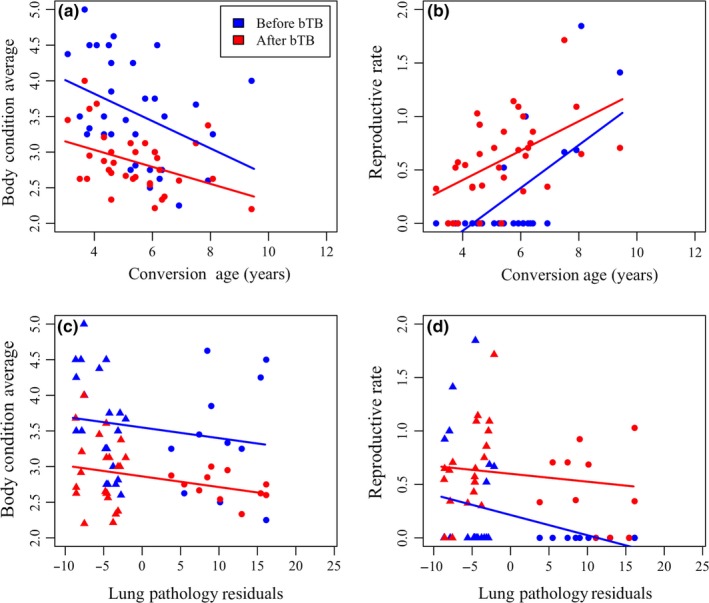Figure 5.

Fitness costs of each resistance trait. Fitness costs of resistance before (blue) and after (red) bTB infection in converted, culled buffalo (n = 33). Body condition and reproductive rate (calves/year) were assessed in each animal relative to a continuous metric of infection resistance (conversion age; a–b) and a continuous metric of proliferation resistance (pathology residuals in the lung lesion count over time since onset nonlinear regression; c–d). Triangles denote negative residuals and more proliferation resistant animals, while circles denote positive residuals and less proliferation resistant animals. Both resistance traits were included in each fitness model, however, here resistance traits are graphed separately to show main effects on fitness measures. Overall, more infection‐resistant animals (later conversion age) had lower body condition but a higher reproductive rate, while more proliferation resistant animals (lower pathology) had a higher body condition and reproductive rate. Each converted, culled animal is represented twice in each fitness graph with an average before‐ and after bTB infection fitness measurement
